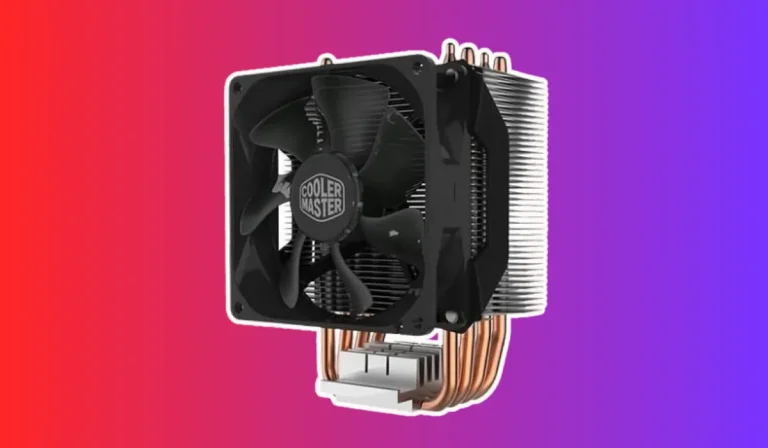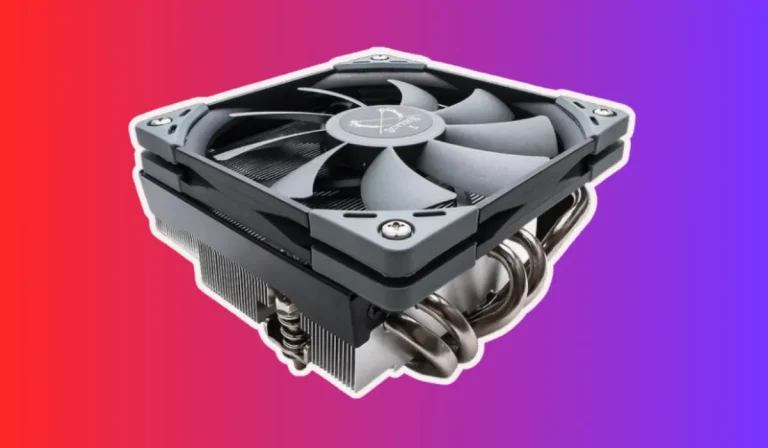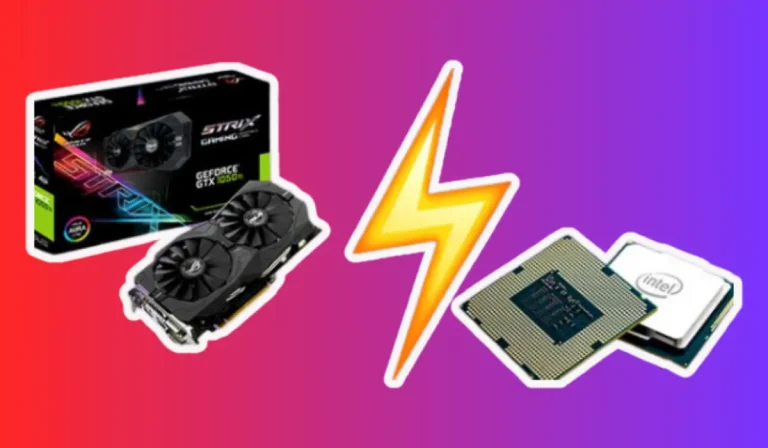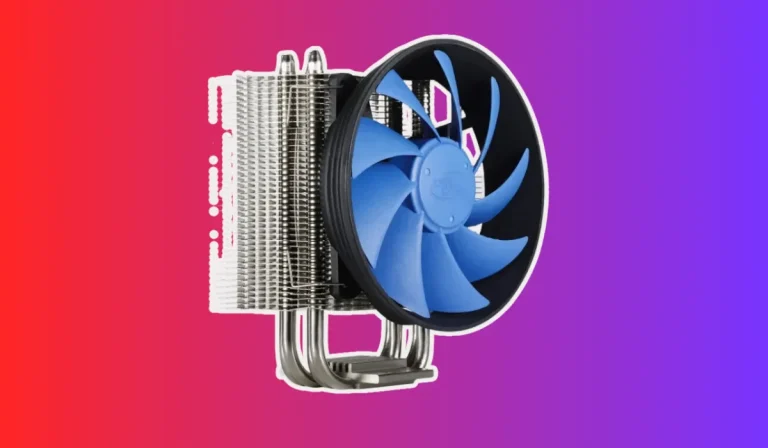Best Graphics Card for DDR4
Are you ready to take your gaming to the next level? Look no further than the best graphics card for DDR4. Designed to deliver stunning visuals and smooth gameplay, this powerful component is a game-changer for any avid gamer.
Whether you’re into action-packed adventures or competitive multiplayer battles, this graphics card will bring your virtual worlds to life. Say goodbye to lag and hello to an immersive gaming experience like no other. Get ready to unleash the full potential of your gaming rig with the best graphics card for DDR4.
Best Graphics Card for DDR4
| Serial No. | Product Name | Check Price |
| 1. | NVIDIA GeForce RTX 3080 | Check Price |
| 2. | AMD Radeon RX 6800 XT | Check Price |
| 3. | NVIDIA GeForce RTX 3070 | Check Price |
| 4. | AMD Radeon RX 6700 XT | Check Price |
| 5. | NVIDIA GeForce RTX 3060 Ti | Check Price |
| 6. | ASUS ROG Strix GeForce RTX 3090 | Check Price |
1. NVIDIA GeForce RTX 3080
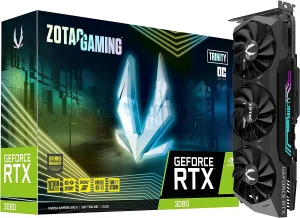
| Specification | Value |
| Memory Speed | 19 Gbps |
| Architecture | NVIDIA Ampere |
| Ray Tracing Cores | 2nd Gen |
| Tensor Cores | 3rd Gen |
| Boost Clock | 1725 MHz |
| Memory | 10GB 320-bit GDDR6X |
| PCIE | 4.0 |
| RGB Lighting | SPECTRA 2.0 |
| Cooling System | IceStorm 2.0 Advanced Cooling |
| Fan Control | Active Fan Control |
| Frontplate | Metal |
| Backplate | Lighted |
| Software Compatibility | Official Software Only |
| Display Support | 8K Ready, 4 Display Ready |
| HDCP | 2.3 |
| VR Ready | Yes |
| ETH Hash Rate | 43 MH/s (estimated) |
| Display Connections | 3 x DisplayPort 1.4a, 1 x HDMI 2.1 |
| API Support | DirectX 12 Ultimate, Vulkan RT API, OpenGL 4.6 |
NVIDIA GeForce RTX 3080 is undoubtedly one of the best graphics cards for DDR4. As an avid gamer, I am always on the lookout for the best graphics card to enhance my gaming experience. The NVIDIA GeForce RTX 3080 has undoubtedly caught my attention, and I must say, it lives up to the hype.
One of the standout features of this graphics card is its impressive memory speed of 19 Gbps. This ensures smooth and lag-free gameplay, allowing me to fully immerse myself in the virtual worlds I explore.
The NVIDIA Ampere architecture, combined with the 2nd Gen Ray Tracing Cores and 3rd Gen Tensor Cores, delivers breathtaking visuals and realistic lighting effects.
The boost clock of 1725 MHz provides a significant performance boost, allowing for seamless gameplay even in demanding titles. With 10GB of 320-bit GDDR6X memory, this graphics card can handle high-resolution textures and deliver stunning graphics.
The cooling system on the NVIDIA GeForce RTX 3080 is top-notch. The IceStorm 2.0 Advanced Cooling ensures that the card stays cool even during intense gaming sessions. The FREEZE Fan Stop feature further adds to the card’s longevity by preventing unnecessary wear and tear.
I appreciate the attention to detail in the design of this graphics card. The SPECTRA 2.0 RGB Lighting adds a touch of personalization to my gaming setup, while the metal front plate and lighted backplate give it a premium look and feel.
It is important to note that this graphics card is compatible only with official software. It is advisable to avoid using unofficial software to ensure optimal performance and stability.
In terms of connectivity, the NVIDIA GeForce RTX 3080 offers multiple display options, including 3 x DisplayPort 1.4a and 1 x HDMI 2.1. It is 8K ready and supports up to four displays, making it perfect for multi-monitor setups.
While the NVIDIA GeForce RTX 3080 has numerous positive attributes, it’s essential to consider a few drawbacks as well:
Pros:
- Incredible performance with a boost clock of 1725 MHz
- Impressive memory speed of 19 Gbps
- Advanced cooling system for optimal temperature management
- Stunning design with customizable RGB lighting
- Multiple display options for versatile connectivity
Cons:
- Compatibility is limited to official software only
- Higher price point compared to other graphics cards
2. AMD Radeon RX 6800 XT
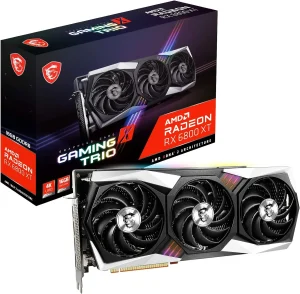
| Specification | Value |
| Chipset | Radeon RX 6800 XT |
| Video Memory | 16GB GDDR6 |
| Memory Interface | 256-bit |
| Output | DisplayPort x 3 (v1.4) / HDMI 2.1 x 1 |
| Digital maximum resolution | 7680 x 4320 |
AMD Radeon RX 6800 XT is undoubtedly one of the best graphics cards for DDR4. As an avid gamer, I am always in pursuit of the best graphics card to enhance my gaming experience. The AMD Radeon RX 6800 XT has caught my attention, and I must say, that it has exceeded my expectations.
Equipped with the Radeon RX 6800 XT chipset, this graphics card delivers exceptional performance and stunning visuals.
With 16GB of GDDR6 video memory and a 256-bit memory interface, it can handle even the most demanding games and applications with ease. The AMD Radeon RX 6800 XT truly shines when it comes to delivering high-resolution textures and immersive gaming experiences.
When it comes to connectivity, this graphics card offers three DisplayPort 1.4 outputs and one HDMI 2.1 output. This allows for seamless multi-monitor setups and supports digital maximum resolutions of up to 7680 x 4320. The ability to connect multiple displays further enhances the gaming experience, providing a wider field of view and improved immersion.
One of the standout features of the AMD Radeon RX 6800 XT is its incredible performance. Whether I’m exploring vast open worlds or engaging in intense multiplayer battles, this graphics card delivers smooth and lag-free gameplay. The high clock speeds and efficient architecture ensure that every frame is rendered with precision and detail.
The AMD Radeon RX 6800 XT also boasts impressive cooling capabilities. The card is designed with efficient cooling solutions to prevent overheating during long gaming sessions. This means I can focus on my gameplay without worrying about performance throttling or stability issues.
Now, let’s take a look at the positive and negative aspects of the AMD Radeon RX 6800 XT:
Pros:
- Exceptional performance for smooth and immersive gaming
- High video memory capacity for handling demanding games and applications
- Versatile connectivity options with multiple DisplayPort and HDMI outputs
- Supports high-resolution displays for stunning visuals
Cons:
- Availability may be limited, leading to potential challenges in obtaining the graphics card
- Power consumption is relatively high, requiring a robust power supply unit
3. NVIDIA GeForce RTX 3070
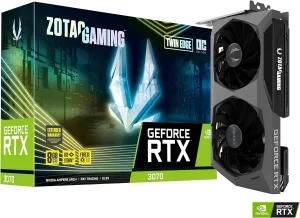
| Specification | Value |
| Architecture | NVIDIA Ampere |
| Ray Tracing Cores | 2nd Gen |
| Tensor Cores | 3rd Gen |
| Boost Clock | 1755 MHz |
| Video Memory | 8GB GDDR6 |
| Memory Interface | 256-bit |
| Memory Speed | 14 Gbps |
| PCIE Version | 4.0 |
| Low Hash Rate (LHR) | 25 MH/s ETH hash rate (est.) |
| LED Logo Lighting | White |
| Cooling | IceStorm 2.0 Advanced Cooling |
| Fan Control | FREEZE Fan Stop, Active Fan Control |
| Backplate | Metal |
| Display Output | 4 x DisplayPort 1.4a, 1 x HDMI 2.1 |
| Features | 8K Ready, 4 Display Ready, HDCP 2.3, VR Ready |
| Compatibility | DirectX 12 Ultimate, Vulkan RT API, OpenGL 4.6 |
NVIDIA GeForce RTX 3070 is undeniably one of the best graphics cards for DDR4. As a passionate gamer, I’m always on the lookout for the best graphics card to take my gaming experience to the next level.
The NVIDIA GeForce RTX 3070 has emerged as a powerhouse in the world of gaming graphics cards, and after putting it through its paces, I can confidently say that it lives up to the hype.
The NVIDIA GeForce RTX 3070 is built on the impressive NVIDIA Ampere architecture, featuring 2nd Gen Ray Tracing Cores and 3rd Gen Tensor Cores.
This powerful combination delivers exceptional visual fidelity and real-time ray tracing capabilities, resulting in stunningly realistic graphics and immersive gameplay. Whether I’m exploring detailed open worlds or engaging in fast-paced action, the RTX 3070 handles it all with ease.
With a boost clock of 1755 MHz and 8GB of high-speed GDDR6 video memory on a 256-bit memory interface, the RTX 3070 delivers a smooth and fluid performance.
It effortlessly handles demanding games and resource-intensive applications, ensuring that every frame is rendered with precision and detail. The PCIE 4.0 support further enhances data transfer speeds, reducing any potential bottlenecks.
One notable feature of the RTX 3070 is its advanced cooling system. The IceStorm 2.0 cooling solution keeps the card running optimally even during extended gaming sessions.
The combination of FREEZE Fan Stop and Active Fan Control ensures efficient heat dissipation while maintaining a whisper-quiet operation. The addition of a metal backplate adds structural rigidity and protects the card from damage.
The RTX 3070 is not only a powerhouse for gaming but also a versatile companion for content creation. With 8K readiness and support for up to four displays, it offers incredible visual fidelity and multitasking capabilities. The card is VR-ready, allowing for immersive virtual reality experiences that transport you into a whole new world.
Now, let’s take a look at the positive and negative aspects of the NVIDIA GeForce RTX 3070:
Pros:
- Exceptional performance and visual fidelity, thanks to the powerful Ampere architecture
- Real-time ray tracing capabilities for incredibly realistic graphics
- The advanced cooling system ensures optimal performance and quiet operation
- Versatile connectivity options with multiple DisplayPort and HDMI outputs
Cons:
- Availability may be limited, leading to potential challenges in obtaining the graphics card
- Power consumption can be relatively high, requiring a capable power supply unit
4. AMD Radeon RX 6700 XT
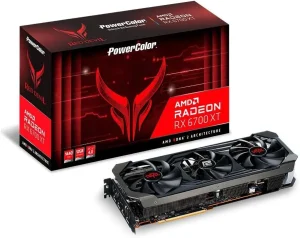
| Specification | Value |
| Memory Speed | 16 Gbps |
| Digital Max Resolution | 7680×4320 |
| Package Weight | 2.0 Kg |
| Stream Processor | 2560 |
| Game Clock | 2514MHz (OC) / 2433MHz (Silent) |
| Boost Clock | 2633MHz (OC) / 2615MHz (Silent) |
AMD Radeon RX 6700 XT stands as one of the best graphics cards for DDR4 gaming. As an avid gamer, I am always in search of the best graphics card to elevate my gaming experience.
The AMD Radeon RX 6700 XT has recently caught my attention, and after spending some quality time with it, I can confidently say that it is a fantastic choice for DDR4 gaming enthusiasts.
The AMD Radeon RX 6700 XT boasts impressive specifications that deliver exceptional performance and visual fidelity. With a memory speed of 16 Gbps, it ensures smooth and responsive gameplay, even in the most demanding titles. The digital max resolution of 7680×4320 allows for breathtakingly sharp and detailed visuals, making every gaming moment truly immersive.
In terms of power and efficiency, the RX 6700 XT strikes a great balance. With a package weight of 2.0 Kg, it is relatively lightweight and easy to handle.
The card houses 2560 stream processors, enabling it to handle complex graphics rendering with ease. Whether you’re exploring vast open worlds or engaging in fast-paced multiplayer battles, the RX 6700 XT keeps up effortlessly.
When it comes to clock speeds, the RX 6700 XT offers both game clock and boost clock options. The game clock operates at 2514MHz (OC) or 2433MHz (Silent), delivering consistent and reliable performance.
The boost clock, on the other hand, can reach up to 2633MHz (OC) or 2615MHz (Silent), providing an extra burst of power when needed. These clock speeds ensure smooth gameplay and minimize any potential lag or stuttering.
Now, let’s delve into the positive and negative aspects of the AMD Radeon RX 6700 XT:
Pros:
- Exceptional performance and visual fidelity, thanks to high memory speed and stream processors
- Stunningly sharp and detailed visuals with a digital max resolution of 7680×4320
- Relatively lightweight and easy to handle
- Offers both game clock and boost clock options for customizable performance
Cons:
- Availability may be limited, leading to potential challenges in obtaining the graphics card
- Power consumption can be relatively high, requiring a capable power supply unit
5. NVIDIA GeForce RTX 3060 Ti
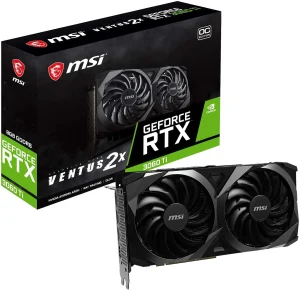
| Specification | Value |
| Chipset | NVIDIA GeForce RTX 3060 Ti |
| Video Memory | 8GB GDDR6 |
| Memory Interface | 256-bit |
| Output | DisplayPort x 3 (v1.4a) / HDMI 2.1 x 1 |
| Digital Maximum Resolution | 7680 x 4320 |
NVIDIA GeForce RTX 3060 Ti stands as one of the best graphics cards for DDR4 gaming. As an avid gamer, I’m always on the lookout for the best graphics card to enhance my gaming experience.
Recently, I had the pleasure of trying out the NVIDIA GeForce RTX 3060 Ti, and I must say, it left me thoroughly impressed. This powerhouse of a graphics card is certainly a strong contender for DDR4 gaming enthusiasts.
The NVIDIA GeForce RTX 3060 Ti is built on the formidable NVIDIA GeForce architecture, ensuring top-notch performance and stunning visuals.
With 8GB of GDDR6 video memory and a 256-bit memory interface, it delivers smooth and seamless gameplay, even in the most demanding titles. This ensures that every detail is rendered with precision and clarity, immersing you in the gaming world like never before.
One of the standout features of the RTX 3060 Ti is its output options. With three DisplayPorts (v1.4a) and one HDMI 2.1 port, you have the flexibility to connect multiple displays or high-resolution monitors.
This allows you to enjoy your games in all their glory, with support for digital maximum resolutions of up to 7680 x 4320. The stunning visuals produced by this graphics card truly bring your games to life.
Now, let’s take a closer look at the positive and negative aspects of the NVIDIA GeForce RTX 3060 Ti:
Pros:
- Exceptional performance and stunning visuals, thanks to the powerful NVIDIA GeForce architecture
- Ample 8GB GDDR6 video memory ensures smooth and seamless gameplay
- Multiple output options allow for versatile display configurations
- Supports high digital maximum resolutions, providing an immersive gaming experience
Cons:
- Availability may be limited, making it challenging to acquire the graphics card
- Power consumption can be relatively high, necessitating a capable power supply unit
6. ASUS ROG Strix GeForce RTX 3090
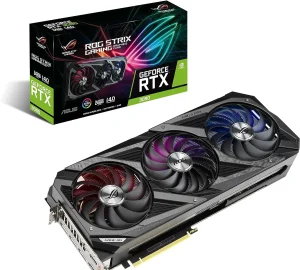
| Specification | Value |
| Memory Speed | 19.5 Gbps |
| Digital Max Resolution | 7680 x 4320 |
| NVIDIA Ampere Streaming Multiprocessors | Improved power efficiency and 2X FP32 throughput |
| 2nd Generation RT Cores | 2X throughput compared to 1st Gen, concurrent RT, and shading |
| 3rd Generation Tensor Cores | Up to 2X throughput, support for up to 8K resolution, enhanced AI capabilities |
| Axial-Tech Fan Design | Reversed central fan direction for reduced turbulence |
| 2.9-slot design | Increased cooling surface area for improved thermal headroom |
| Super Alloy Power II | Premium alloy chokes, solid polymer capacitors, high-current power stages |
ASUS ROG Strix GeForce RTX 3090 stands as one of the best graphics cards for DDR4 gaming. Being a dedicated gamer, I’m always on the lookout for the best graphics card that can take my gaming experience to new heights.
Recently, I had the opportunity to try out the ASUS ROG Strix GeForce RTX 3090, and I must say, it exceeded all my expectations. This graphics card is a true powerhouse and a dream come true for DDR4 gaming enthusiasts.
The ASUS ROG Strix GeForce RTX 3090 is equipped with the latest NVIDIA Ampere Streaming Multiprocessors, which are the building blocks for the fastest and most efficient GPU in the world.
With 2X the FP32 throughput and improved power efficiency, this graphics card delivers unparalleled performance. It can handle even the most demanding games and applications with ease, providing a seamless and immersive gaming experience.
One of the standout features of the RTX 3090 is its 2nd Generation RT Cores. These cores offer 2X the throughput compared to the previous generation, allowing for concurrent ray tracing and shading.
This translates to a whole new level of ray tracing performance, with stunning visuals and lifelike reflections that bring games to life like never before.
The 3rd Generation Tensor Cores in the RTX 3090 also deserve special mention. With support for up to 8K resolution and advanced AI algorithms such as DLSS, these cores deliver a massive boost to in-game performance and introduce all-new AI capabilities.
The structural sparsity and enhanced throughput provided by these Tensor Cores take gaming to a whole new level, providing smooth gameplay and breathtaking visuals.
In terms of cooling, the ASUS ROG Strix GeForce RTX 3090 features an Axial-Tech Fan Design. This design has been newly tuned with a reversed central fan direction, reducing turbulence and improving overall cooling efficiency.
Additionally, the 2.9-slot design expands the cooling surface area compared to the previous generation, allowing for more thermal headroom than ever before. This ensures that the graphics card remains cool even during intense gaming sessions, maintaining optimal performance.
The Super Alloy Power II components in the RTX 3090 further enhance its reliability and performance. With premium alloy chokes, solid polymer capacitors, and an array of high-current power stages, this graphics card is built to withstand the demands of modern gaming. It provides stable power delivery and ensures longevity, allowing you to enjoy your games without any worries.
Pros:
- Unparalleled performance and power efficiency, thanks to NVIDIA Ampere Streaming Multiprocessors
- 2X throughput of 2nd Generation RT Cores enables concurrent ray tracing and shading
- 3rd Generation Tensor Cores deliver enhanced AI capabilities and support for up to 8K resolution
- Axial-Tech Fan Design and 2.9-slot design provide efficient cooling and thermal headroom
- Super Alloy Power II components ensure reliable and stable performance
Cons:
- High price point, making it less accessible for budget-conscious gamers
- Large physical size may not fit in all PC cases
Buying Guide: Best Graphics Card for DDR4
Choosing the right graphics card for your DDR4 gaming setup can be a daunting task. With so many options available in the market, it’s important to consider several factors to ensure you make an informed decision.
In this buying guide, we will discuss six key factors that you should consider when choosing the best graphics card for DDR4. Whether you’re a casual gamer or a hardcore enthusiast, this guide will help you find the perfect graphics card that meets your needs and provides an exceptional gaming experience.
1. Performance: When it comes to gaming, performance is everything. The graphics card you choose should be able to handle your favorite games with ease, providing smooth gameplay and stunning visuals.
Consider the GPU’s core clock speed, memory speed, and the number of CUDA cores or stream processors it has. Higher clock speeds and more cores generally indicate better performance.
2. Resolution and Refresh Rate: The resolution and refresh rate of your monitor play a crucial role in determining the graphics card you need. If you have a high-resolution monitor (such as 1440p or 4K) and want to enjoy games at their maximum visual fidelity, you’ll need a powerful graphics card that can handle the increased pixel count.
Similarly, if you have a high-refresh-rate monitor (such as 144Hz or 240Hz), you’ll need a graphics card that can deliver high frame rates to take full advantage of the monitor’s capabilities.
3. Budget: Set a budget for your graphics card purchase and stick to it. Graphics cards come in various price ranges, and it’s important to find a balance between your desired performance and your budget.
Consider the price-to-performance ratio of each card and choose the one that offers the best value for your money. Keep in mind that high-end graphics cards tend to be more expensive but also provide top-tier performance.
4. Compatibility: Ensure that the graphics card you choose is compatible with your motherboard and power supply. Check the PCI Express slot version on your motherboard and make sure it matches the graphics card’s requirements.
Additionally, consider the power requirements of the graphics card and ensure that your power supply can handle it. Some high-end graphics cards require additional power connectors, so make sure your power supply has the necessary connectors.
5. Cooling and Noise: Graphics cards can generate a significant amount of heat, especially during intense gaming sessions. Look for graphics cards with efficient cooling solutions such as dual or triple fans, heat pipes, and large heatsinks.
These features help dissipate heat and keep the card running at optimal temperatures. Additionally, consider the noise level produced by the cooling fans. Look for graphics cards with quiet fan designs if you prefer a quieter gaming environment.
6. Future Proofing: Consider the future advancements in gaming technology and whether the graphics card you choose will be able to handle them.
Look for features such as ray tracing support, AI capabilities, and VR readiness. These features ensure that your graphics card will be able to handle upcoming games and technologies, providing a future-proof gaming experience.
Based on the factors discussed above, I would recommend considering the ASUS ROG Strix GeForce RTX 3090 from the above list. With its impressive specifications, including the NVIDIA Ampere Streaming Multiprocessors, 2nd Generation RT Cores, and 3rd Generation Tensor Cores, it offers top-tier performance and future-proof capabilities.
The cooling design of the RTX 3090, along with the Super Alloy Power II components, ensures optimal performance and reliability. However, keep in mind that the RTX 3090 is a high-end graphics card and may be more suitable for enthusiasts or gamers with larger budgets.
If you’re looking for a more budget-friendly option, the ASUS ROG Strix GeForce RTX 3060 Ti is also worth considering. It offers a good balance between price and performance, making it a great choice for gamers who want excellent gaming performance without breaking the bank.
FAQ’s
1. Can I use a graphics card designed for DDR5 with a DDR4 system?
No, DDR5 graphics cards are not compatible with DDR4 systems. DDR5 graphics cards require a motherboard that supports DDR5 memory technology.
2. What is the difference between GDDR5 and DDR4 memory on a graphics card?
GDDR5 (Graphics Double Data Rate 5) is a type of memory specifically designed for graphics cards, offering higher bandwidth and better performance compared to DDR4 memory. DDR4 is a type of system memory used by the CPU and is not as optimized for graphics-intensive tasks.
3. Can I use a high-end graphics card with a low-end power supply?
It is not recommended to use a high-end graphics card with a low-end power supply. High-end graphics cards typically have higher power requirements, and using a low-end power supply may result in instability or system crashes. It is important to ensure that your power supply can provide sufficient power to the graphics card.
4. What does VRAM capacity mean, and how does it affect gaming performance?
VRAM (Video Random Access Memory) capacity refers to the amount of dedicated memory on a graphics card. More VRAM allows the graphics card to store more data, textures, and shaders, resulting in improved performance, especially at higher resolutions and when using advanced graphics settings.
However, having excessive VRAM beyond what your gaming needs require may not necessarily provide a significant performance boost.
5. Are all graphics cards compatible with all motherboards?
No, not all graphics cards are compatible with all motherboards. Compatibility depends on factors such as the graphics card’s interface (e.g., PCIe), the motherboard’s available expansion slots, and the power supply’s connectors.
It is important to check the specifications of both your motherboard and the graphics card to ensure compatibility before making a purchase.
Conclusion
Choosing the best graphics card for your DDR4 system can greatly enhance your gaming experience. By considering factors such as performance, resolution, budget, compatibility, cooling, and future-proofing, you can find a graphics card that meets your specific needs and requirements.
Whether you’re a casual gamer or a hardcore enthusiast, there are options available for every budget and gaming preference. Remember to research and compare different models to make an informed decision.
So, go ahead and select a graphics card that will bring your games to life with stunning visuals and smooth gameplay. Happy gaming!

